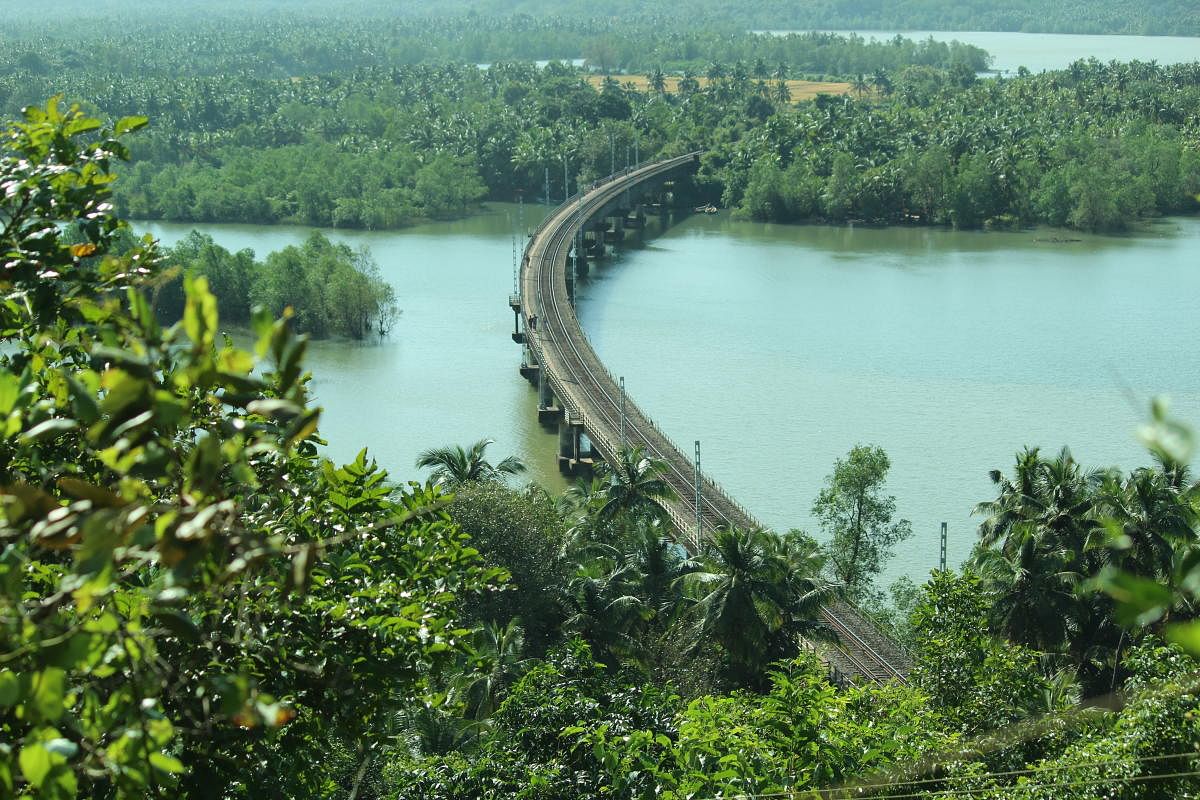
Two of my friends and I decided to explore the coast of Karnataka in the picturesque region of Honnavar-Gokarna. We were welcomed by my friend’s maternal grandparents who resided in the town. After a refreshing bath, we were served a delectable breakfast consisting of kotte kadubu (idli made in jackfruit leaves), home-made coconut chutney, sambar, and jaggery tea. After breakfast, we strolled down to the Sharavati River, one of India’s westward-flowing river that entirely flows within the state of Karnataka. We found ourselves on the two-kilometre long Sharavati bridge, the longest railway bridge in the Konkan railways as well as in Karnataka, built during the mid-90s and located south of Honnavar. My friend told us that we can feel the vibrations of the bridge when trains pass by. Although we waited a while for a train to pass, no train came. Perhaps we should have checked the train schedule before lying in wait for quite so long. There was a two-kilometre long tunnel at one end of the railway bridge, swallowing the bogeys like a gaping mouth in the mountainside.
We walked towards the riverbank and rented a canoe on a whim. We paddled to Mavinkurve Island, located only a few kilometres away to the west of the bridge by the Sharavati River. The word “Mavin” means mango and “Kurve” means basket, both stemming from the local language, Kannada.
A quiet island lined with coconut trees, Mavinkurve was lively and filled with curious residents watching us outsiders. It was truly a throwback to a past era; the only modern machinery we came across was an ATM! My friend took us to Shri Navadurga Temple. The temple had beautiful traditional murals made from Kaavi Kale that depicted scenes from Hindu mythology. Kaavi Kale is an ancient art form that originated in the Konkan region where the artists use bright red (kaav in Konkani) colour against a white background to draw murals.
This island was once famous for its magnificent locks and the ironsmiths who crafted them. Even the British approached the islanders for their sturdy and heavy, handmade locks which had a double locking system, unique for their time. But with time and modernisation, this art was boxed, people shifted to modern locks, and locksmith families migrated from the island looking for new sources of income. This migration from the old ways to new techniques can be seen throughout rural India, from the high Himalayas to the backwaters of Kerala.
On our way back to the canoe, we stopped at a local shop that looked to be from a bygone era. It had wooden, movable doors like those used in the past, and my friend pointed at the old-style island lock which held together not only the heavy doors, thus securing the building, but also the culture and history of the island.
We turned to return the way we had come and glimpsed a train crossing the old railway bridge. What a shame that we were not there to experience the vibrations!